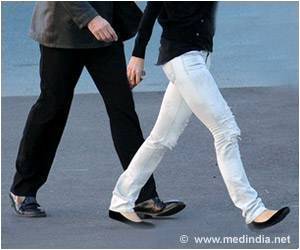It was already known gaining muscle strength in one limb due to resistance training will transfer to the same muscle on the opposite side of the body. This is known as the cross-education effect.
However, the key aspect of this study is one muscle contraction proved most effective. In this study, 36 sedentary young men have their non-dominant arm immobilized by wearing a cast at their elbow joint for three weeks.
They were then split into three even groups: a concentric contraction group that lifted a dumbbell using the non-immobilized arm, an eccentric contraction group that lowered a dumbbell, and a control group that performed no exercises (see definitions below).
Advertisement
While their arm was immobilized, the concentric and eccentric groups had six weightlifting sessions twice a week, for three weeks. These sessions would see them perform five sets of six dumbbell curls with a dumbbell corresponding to 20, 40, 40, 60, 60, and 80 percent of their maximal strength over the six sessions.
When the cast was removed, the control group who did no exercises saw more than a 15 percent decreases in strength in the immobilized arm. However, those who lifted weights saw little to no drop off in the immobilized arm’s muscle strength.
The concentric group saw muscle strength reduced to 4 percent, but interestingly, muscle strength increased by 4 percent for the eccentric group, showing a stronger cross-education effect. Researchers also measured the size of the muscle on the immobilized arm.
The control group saw muscle size decrease by around 12 percent, whereas both concentric and eccentric muscle contractions with the opposing arm counteracted muscle atrophy in the immobilized arm.
Strengthening the Opposite Side of the Body can Stop Muscle Wasting
Muscle size still decreased by 4 percent for the concentric group, while remarkably no decreases in muscle size were observed for the eccentric group.
All participants were asked to perform 30 eccentric contractions with their immobilized arm once the cast was removed, with researchers measuring various muscle damage markers before, immediately following, and five days after the exercise.
The control group showed very severe muscle soreness and strength loss after the exercise, with the concentric group showing far less damage. Again, the eccentric group saw the best results, providing a protective effect strong enough for peak muscle soreness to be reduced by 80 percent compared to the control group and 40 percent of the concentric group.
It is already known that eccentric muscle contractions appear to be the most effective at promoting muscle strength and size gains, even in very small doses.
It is important to investigate whether this latest study’s results are replicated for other muscles and whether eccentric resistance training is effective when dealing with immobilization in real injuries, such as ligament sprains or tears, bone fracture, and post-surgery.
Healthcare providers can recommend resistance training and eccentric contractions in particular to minimize the negative effects of immobilization and hopefully lessen its impact on people’s lives.
Source: Eurekalert



